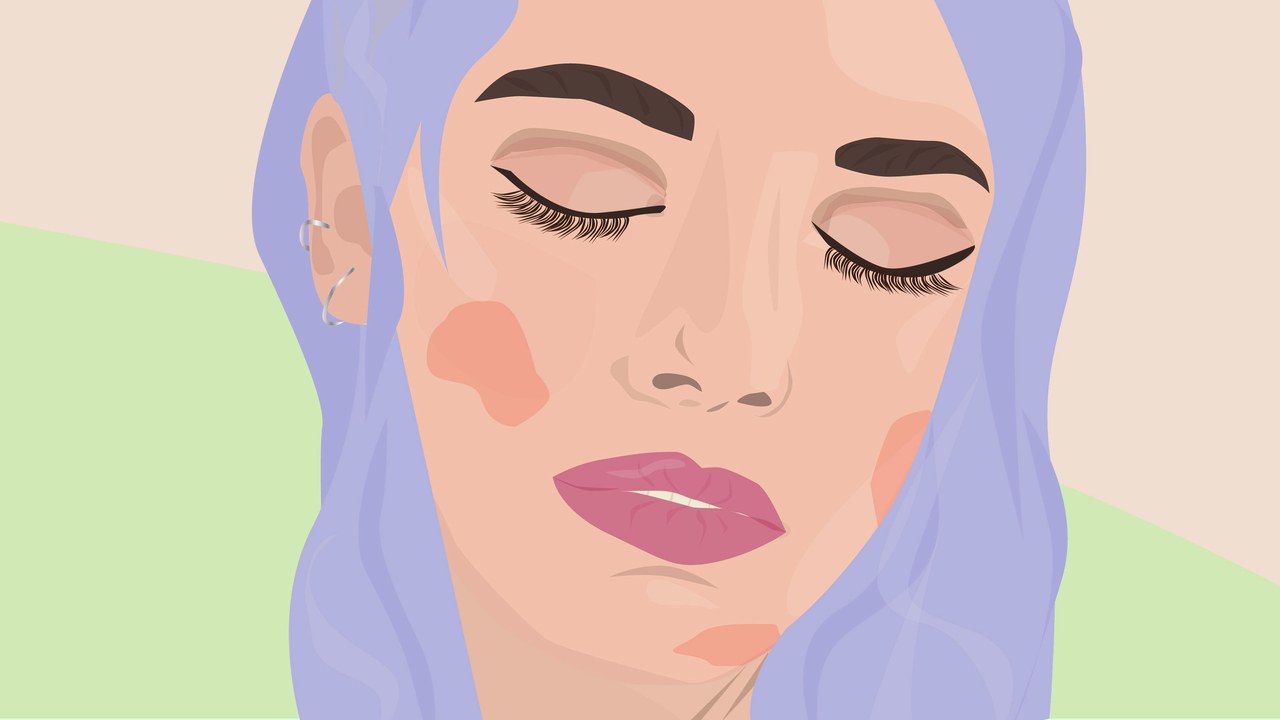8 Reasons You Have Redness on Your Face and How to Treat It

Facial redness is one of those mysteries I’m never quite sure how to solve. It’s apparent when my face seems more flushed than usual—but not always so clear what I should do about it, or even why I have it. Case in point: I’ve apparently spent my whole life with a mild case of rosacea (which I suspected for years, but never confirmed up until a month ago). And last year, when I experienced what turned out to be an eczema flare-up, even the dermatologist I visited had to walk me through a very long series of questions before determining exactly what I was experiencing.
There’s a wealth of information out there on the many types of facial redness, but it can get incredibly overwhelming to sort through it all. Instead of suggesting that you Google multiple variations of “Why is my face red?” and play a guessing game, I spoke to three top dermatologists about the most common causes of redness and how to treat each one.
“Your face becomes red when blood vessels dilate,” says Dr. Joshua Zeichner, Director of Cosmetic & Clinical Research in Dermatology at Mount Sinai Hospital in New York City. “This means that more blood rushes to your skin, giving it a red appearance.” From there, however, it gets a lot more complicated. Ahead, find derms’ best tips for identifying, soothing, and treating any kind of flare-up, from over-exfoliation to seborrheic dermatitis.
1. Rosacea
Rosacea is probably the first thing that comes to mind when you try to self-diagnose facial redness. But, it’s not always the case—so it never hurts to get a second opinion from a derm. “Rosacea is a condition where your skin is sensitive and overly reactive to environmental triggers,” says Dr. Zeichner. “These triggers include extremes in temperature, stress, spicy foods, and alcohol.” It also varies in appearance. I previously thought it showed up as a persistent flush under your skin, but it can manifest in multiple forms. Dr. Jessica Weiser, a dermatologist in New York City, identifies the most common one as erythematotelangiectatic, this is the commonly seen “flat” redness and flushing. But, you might also notice papulopustular rosacea, which she characterizes as redness with a primary feature of “pimple-like pink and red bumps, some with whiteheads.”
As far as treatment goes, there are two things to know. First, there is no permanent “cure” for rosacea, although it can be managed, which Dr. Zeichner recommends you do as early as possible to prevent progression. Second, what you do depends on how mild or extreme your specific case is. There are topical options that constrict blood vessels and calm inflammation, like Rhofade, which Dr. Dendy Engelman, a dermatologist in New York City, suggests. In more severe cases, Dr. Weiser says you may need to consider low-dose antibiotics or laser treatments. In any case, expect to wait a minimum of four to six weeks to see noticeable improvement. The final thing you want to do is keep your skin barrier in good shape. Dr. Zeichner suggests gentle cleansers, soothing moisturizers, and total avoidance of exfoliating ingredients (both chemical and physical). A good tip: Where the rest of your routine is concerned, look for products designed for “redness relief.” (Clinique’s Redness Solutions line is fantastic.)
2. Eczema
Ah, eczema, the brooding mystery of skin conditions. This one can be surprisingly tough to diagnose, as I found out firsthand when I got my 2018 flare-up. “Eczema and allergic contact dermatitis are difficult to differentiate from clinical evaluation alone because both have inflamed pink dry patches that cause significant itching or a burning sensation,” says Dr. Weiser. If you think you have it, exit your nearest search engine and leave things to a professional. A dermatologist should carefully go through your medical history and personal care products to determine which one you’re experiencing. You might be prescribed a topical cortisone or anti-inflammatory cream to bring down the redness and inflammation. Keep the rest of your routine full of gentle, mild ingredients, avoiding fragrance altogether. Steer clear of retinol and embrace hypoallergenic labels, and you should see an improvement within one to two weeks. “These conditions generally flare with cold weather, change of climate, or change of skin care products, so they tend to respond readily when conditions are optimized,” says Dr. Weiser.
